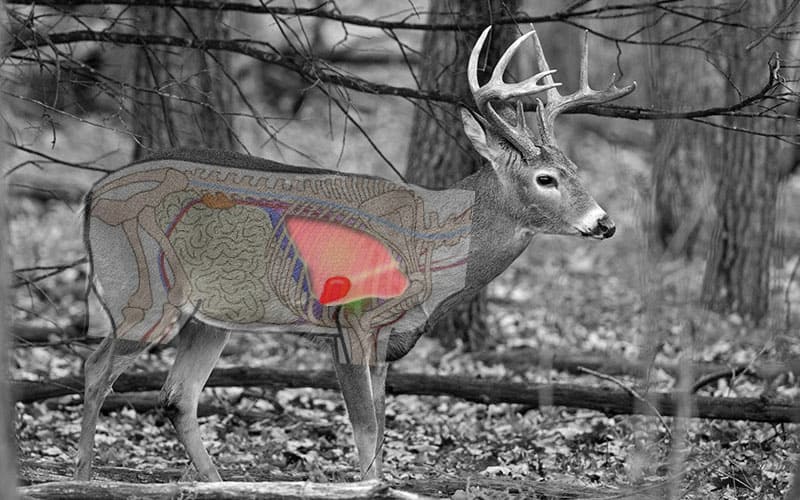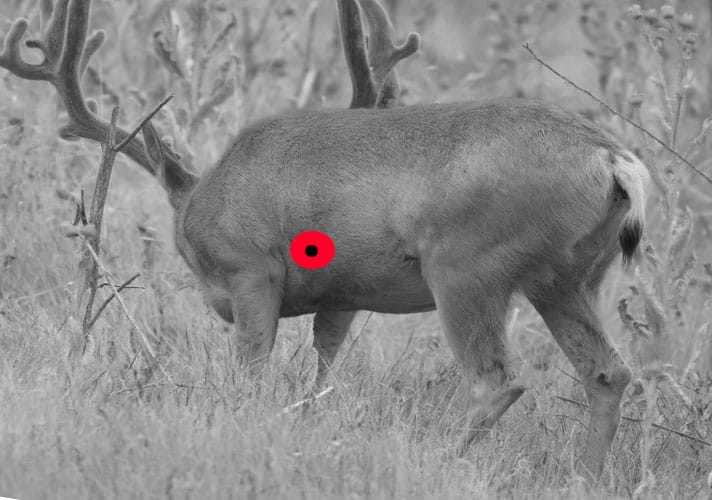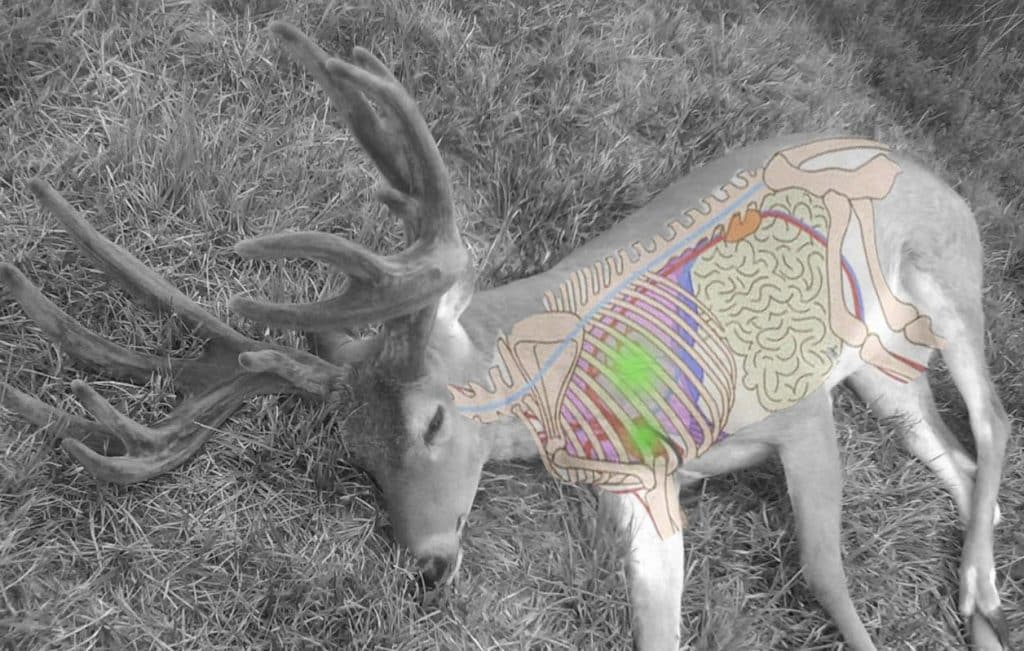With the right broadhead hunters can take down every animal North America has to offer. So why do so many hunters have difficulties taking down deer? The problem is that no broadhead can compensate for poor decision-making in the field. Whether that’s improper shot placement or over/under estimating range. There are 1 million different scenarios that affect whether or not you should take a shot.
White Tail Deer Shot Placement
Rifle hunters have a lot more options than their bow hunting brethren. With a bow the only two shots you should actually take are broadside and quartering away. With these two shots you should have clear access to the vital organs offering easy shot placement.
Broadside

Broadside shots are what makeup every hunters wildest dreams. These are the the shot opportunities that everybodies wait for. The vitals are easily accessible and put on display right in front of you. Going after a double lung shot is easily the best shot a hunter can take, but some hunters prefer aiming for the heart.
The only real benefit of aiming for the heart is if the deer jumps the string. When a deer jumps the string they typically drop down and arch their back. If they react fast enough a lung shot will sore right over his back. Aiming for the heart offers a smaller target, but it’ll be low enough to guarantee a hit. The only other way to avoid “jumping the string is to silence your bow as much as possible.
To aim for a heart shot try shooting approximately four inches above the deers front leg. Just be careful not to hit to low because you might get stuck on the large leg bone. Using something like the G5 Montec broadhead should allow you to crush through bone without having to worry. Aiming high on the other hand will most likely pin both of the lungs guaranteeing a death.
Hit a Deer That’s Quartering Away

Personally I prefer shooting at a deer that’s quartering away versus broadside. A deer that’s quartering away takes all the guess work out of your shot. The kill zone is going to be huge and you’re almost guaranteed to hit both lungs with proper shot placement.
Simply aim directly above the far shoulder to line up the best shot. Go halfway up the body so that you have the best shot at hitting the kill zone.
When to Pass Up The Shot
By far the most important thing to remember about bow hunting is that you’re going to need to pass up a few shots that could be possible with a rifle. You should never take a frontal, rear, quartering-to or straight down shot using a bow.
Straight Down and Frontal Shot
While you can hit the vitals with a frontal shot or straight down shot the vitals will shrink significantly. It just isn’t fair to the deer to take a shot with such a large margin of error. With such a small vital area you’re much more likely to just wound the deer. You’ll not only lose the deer he’ll probably suffer a cruel and unusual death.
Texas Heart Shot
Another shot that bow hunters should really pass on is the “Texas Heart Shot”. While you’re probably familiar with taking turkeys this way deer hunters should pass it by. There are some major arteries on a deers backside, but there’s a lot of bone and low likelihood of success.
Quartering-To Shots
The Quartering-to shot is another shot that has an extremely small margin of error. You’ve probably seen this shot taken by loads of professionals on tv, but I’d probably pass on it in the field. Not only is the vital zone extremely small from this angle, you also have to contend with a lot of bone and muscle. If you do decide to take this shot you’ll definitely need a bone crushing broadhead like the G5 Montec Broadhead recommended above for another difficult shot.
How To Avoid String Jump
Any hunter that shoots with a compound or recurve bow will eventually have to deal with “String Jump”. String jump happens whenever a deer gets spooked by the slap of a string. He drops down and curves his back to protect it from your arrow.
You can avoid string jump by switching to a faster and quieter bow setup. To quiet down your going to want to make sure you use a string stop (Limbsaver String Decelerator), String Silencers (Mossy Oak Silencer) and Limb Dampeners( Limbsaver Solid Limb and Limbsaver Split Limb). With a quiet bow you should be able to take down a buck at just about any range.
How Does Distance Affect Your Shot?
Distance is going to play a significant role in which shots you should actually take. As your distance increases the shot is going to be much harder. Not only will it be more difficult to effectively estimate range, you’ll also have a smaller target.
Other than making adjustments to your aiming point distance really won’t affect the a broadside shot. Quartering shots on the other hand will get much more difficult. As you extend your range the vital zone quickly shrinks on quartering shots.
Learn How To Estimate Distance
As one of the biggest land mammals in North America Deer are a particularly hardy animal. They can survive shots that most humans couldn’t even with medical attention. I don’t even know how a buck can run away after getting shot in the lung and live to see another day. With such a sturdy animal you need to guarantee proper shot placement.
Unlike the shooting range you probably won’t be able to use a range estimation tool out in the field. Instead you’ll have to use a few tricks to guess at the range.
To help me figure out range I like to setup a 3d target and shoot at it from various distances. I’m a huge fan of the Delta Mckenzie Lethal Impact 3d Target. With a highlighted vital zone you can really transfer your practice out into the hunt.
Try to adjust the distance of your target and try to figure out the actual distance. Repetition is key if you really want to learn something. With a little practice you should be on your way to more accurate estimates.

